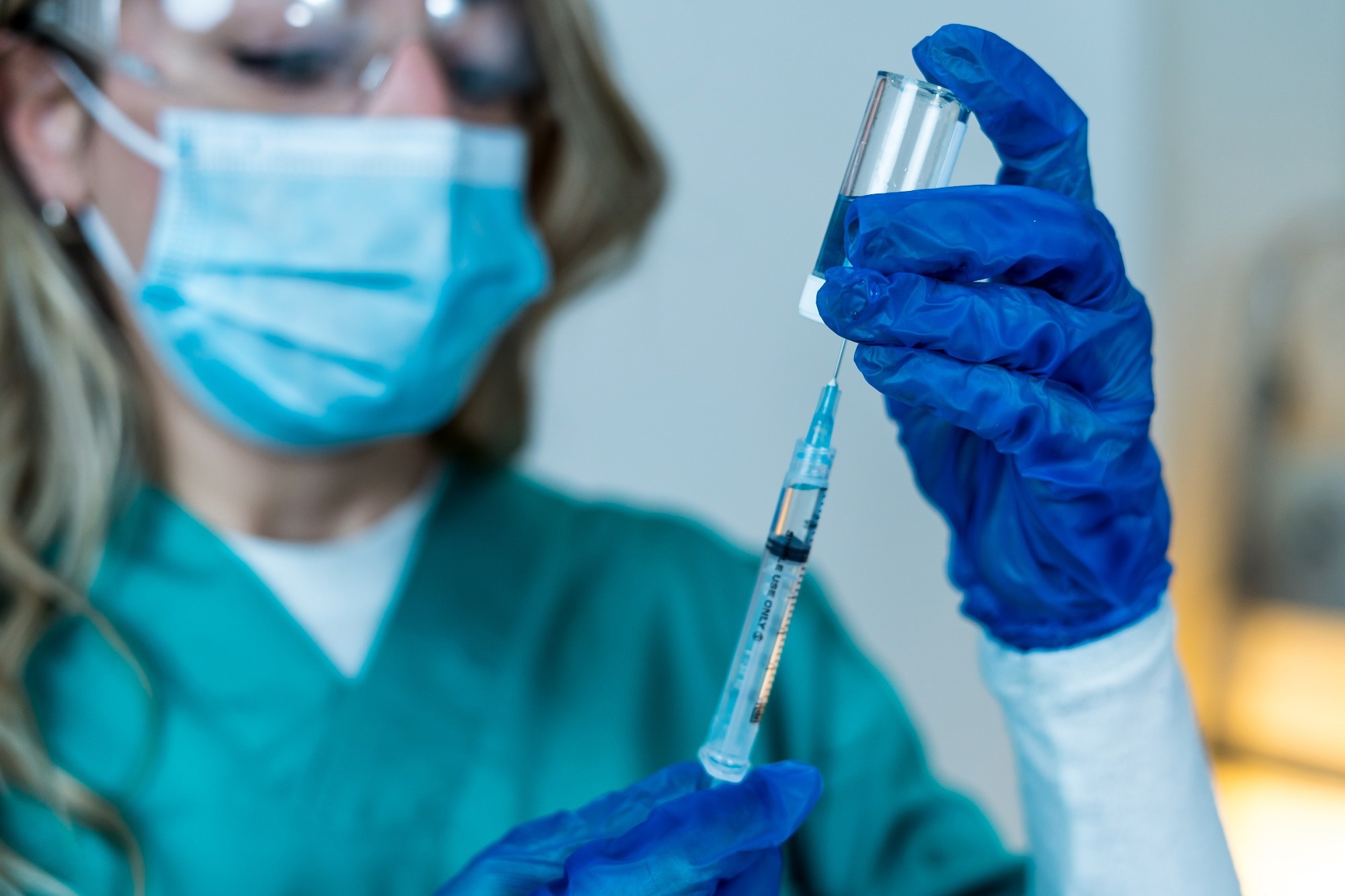In a recent article published in JAMA Network Open, researchers estimate the vaccine effectiveness (VE) of NVX-CoV2373, a recombinant protein-based coronavirus disease 2019 (COVID-19) vaccine against symptomatic infection.
 Study: Estimated Effectiveness of a Primary Cycle of Protein Recombinant Vaccine NVX-CoV2373 Against COVID-19. Image Credit: SB Arts Media / Shutterstock.com
Study: Estimated Effectiveness of a Primary Cycle of Protein Recombinant Vaccine NVX-CoV2373 Against COVID-19. Image Credit: SB Arts Media / Shutterstock.com
Background
In the European Union, several COVID-19 vaccines have been approved for use in the general public. These include two messenger ribonucleic acid (mRNA) COVID-19 vaccines of BNT162b2 and mRNA-1273 and two adenoviral vector vaccines of ChAdOx1 and Ad26.COV2. S, one inactivated vaccine, VLA2001, and two protein recombinant vaccines of NVX-CoV2373 and VidPrevtyn Beta.
Vaccine coverage throughout Europe has remained high; however, the continuous evolution of the severe acute respiratory syndrome coronavirus 2 (SARS-CoV-2) has led to the emergence of new variants of concern (VOCs). Combined with the increased transmission potential of these VOCs, the waning of vaccine-induced and infection-acquired immunity has increased morbidity and mortality rates in Europe due to COVID-19.
Previously, one clinical trial found NVX-CoV2373 to be over 85% effective against the SARS-CoV-2 Alpha variant and its predecessors. This led the European Medicines Agency (EMA) to approve its use in adults 18 years of age and older in late December 2021.
Following EMA approval, NVX-CoV2373 has been shown to elicit neutralizing antibody (nAb) titers to comparable levels following mRNA vaccination. To date, no study has estimated the absolute or relative VE of NVX-CoV2373 in the general population.
About the study
In the present study, researchers retrieved sociodemographic, vaccine administration-related, and clinical data from the National Vaccination Registry of Italy. Likewise, data on COVID-19 incidence and outcomes, including recovery or death, were also obtained from Italy's National Integrated Surveillance (NIS) system.
The study follow-up lasted until September 25, 2022, which ensured at least three weeks of follow-up for each participant. The study period began at the time of administration of the first vaccine dose and ended at the time of infection diagnosis, receipt of the third dose, approximately 120 days after completion of the primary vaccination series, or at the end of the follow-up period, whichever occurred first.
The risk of SARS-CoV-2 infection was confirmed with antigen testing or reverse transcription-polymerase chain reaction (RT-PCR) assay. This risk was assessed at different time points, from day 15 after the first dose up to 14 days following the second dose.
The researchers also performed a sensitivity analysis, in which the reference period was days zero to 14 after administration of the first dose when some amount of vaccine-elicited immunity was present.
Study findings
VE against SARS-CoV-2 infection and symptomatic COVID-19 was 31% and 50%, respectively, among those who completed the primary vaccination series. Notably, the estimated VE declined sharply from 41% to 28% between the first and three to four months after full vaccination.
However, VE did not decrease against symptomatic COVID-19 during the first four months after completion of the full vaccination series. More specifically, the VE of NVX-CoV2373 was 53% and 43% against symptomatic COVID-19 at 30-59 and 60-89 days after full vaccination, respectively.
Using the initial few days after receipt of the first NVX-CoV2373 dose as the control period allowed the researchers to avoid any potential biases arising from unknown or unquantified risk behavior variations between vaccinated and unvaccinated individuals. These were particularly relevant for Italy, wherein at the beginning of 2022, over 90% of the adult population had completed the primary COVID-19 vaccination series.
Conclusions
The study findings demonstrate that two doses of the NVX-CoV2373 vaccine conferred sufficient protection against SARS-CoV-2 infection and symptomatic COVID-19 during an Omicron-dominant period in Italy. Nevertheless, VE eventually waned within the first four months of completing the primary vaccination series against SARS-CoV-2 infection; however, vaccine-induced immunity appears to stabilize against symptomatic COVID-19.
Journal reference:
- Mateo-Urdiales, A., Sacco, C., Petrone, D., et al. (2023). Estimated Effectiveness of a Primary Cycle of Protein Recombinant Vaccine NVX-CoV2373 Against COVID-19. JAMA Network Open 6(10). doi:10.1001/jamanetworkopen.2023.36854